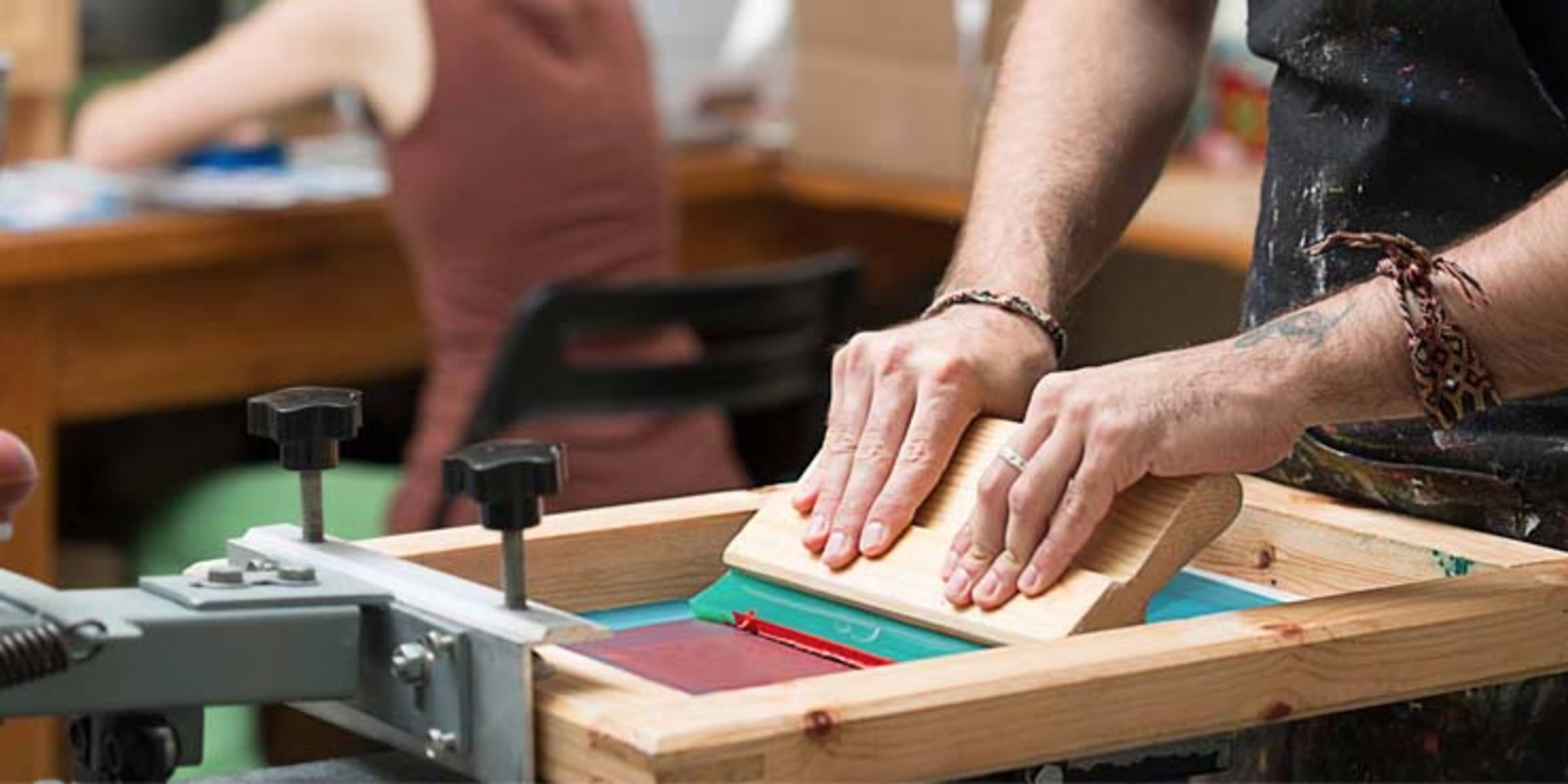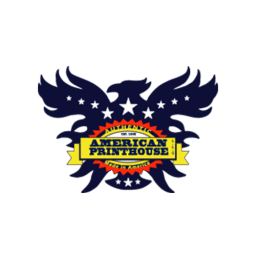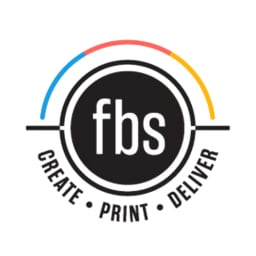

Screen Printing Service Resources
& Best Screen Printing Services
Find a Top-Ranked Screen Printing Service Near You
We did the research for you!
- Licensing
- User Reviews
- Mystery Shopping Calls
Learn about our selection process.
Top Screen Printing Services
= Featured Provider
New York, NY
Merch38
220 East 23rd Street, New York, NY 10010Printleaf
30W W 47th St Ste 405, New York, NY 10036Bushwick Print Lab
100 Grattan Street, Brooklyn, NY 11237
Los Angeles, CA
Top Hat
3202 E. 29th St, Long Beach, CA 90806G2 Graphics
Covina, CA 91724Guru Printers
700 South Flower Street #2750, Los Angeles, CA 90017
Chicago, IL
MyTees2
Chicago, IL 60637Luckyprints
Chicago, IL 60612J Printing Center
Niles, IL 60714
Houston, TX
MusiGraphics
Houston, TX 77070Sunline Products
Katy, TX 77449Blue Vision Printing & Graphics
Houston, TX 77005
Phoenix, AZ
LBX Printing & Design
4132 E McDowell Rd., Ste 7, Phoenix, AZ 85008American Printhouse
Phoenix, AZ 85034Monument Limited
Phoenix, AZ 85006
Philadelphia, PA
JP Tees
Philadelphia, PA 19134Steve's Tees Awards and DeSigns
Bristol, PA 19007Vacord Screen Printing
Camden, NJ 08104
San Antonio, TX
National Embroiders
San Antonio, TX 78229Brand My Stuff
San Antonio, TX 78240Bud's Embroidery
San Antonio, TX 78216
Dallas, TX
Icon Creativ
Dallas, TX 75231FBS Printing
Plano, TX 75074JZ Embroidery
Duncanville, TX 75116
San Diego, CA
No Hand Outs
2127 Olympic parkway, Suite 1006 #132, chula vista, CA 91915TEAM PHUN LLC
San Diego, CA 92109Logo Wear Company
7925 Dunbrook Rd Ste H, San Diego, CA 92126
San Jose, CA
BG Labels & Tees
San Jose, CA 95112San Jose Screenprinting
San Jose, CA 95123Spectrum Apparel Printing
San Jose, CA 95126
Top Screen Printing Services in other locations
- Screen Printing Services in Milwaukee, WI
- Screen Printing Services in Denver, CO
- Screen Printing Services in Seattle, WA
- Screen Printing Services in Nashville, TN
- Screen Printing Services in Washington DC
- Screen Printing Services in Las Vegas, NV
- Screen Printing Services in Louisville, KY
- Screen Printing Services in Oklahoma City, OK
- Screen Printing Services in Tucson, AZ
- Screen Printing Services in Atlanta, GA
Find a Top-Ranked Screen Printing Service Near You
Frequently Asked Questions
What is screen printing?
Screen printing is a method of applying graphics to a T-shirt. It typically involves layering thick inks onto the shirt's surface instead of soaking them into the fabric. Screen printing is also sometimes called silk screening.
Since screen printing generally uses thicker inks, this type of fabric printing is usually better for graphics with one or two colors. If you have more complicated, colorful graphics, direct to garment printing, or DTG, may be a better option.
Major fabric printing methods include:
Screen printing or silk screening
Direct to garment printing
Stamp printing
Thermal transfer printing
Sublimation transfer printing
How does screen printing work?
Screen printing works by using a silkscreen with an exposed design. Ink is swiped across the screen with a squeegee tool, and this action sends the ink design through the screen and onto the T-shirt.
When graphics are printed onto a T-shirt using screen-printing techniques, the colors are sometimes allowed to dry between color applications, and subsequent colors are printed with another screen after the T-shirt is realigned on the press.
What is silk-screen printing?
Traditionally, screen printing has been called silk-screen printing because originally, silk was the primary material used in the process. The mesh portion of the screen was made of silk. In modern times, synthetic threads are commonly used in the silk-screening process, with polyester being one of the most popular choices. Nylon and stainless steel are also used in some screen-printing applications.
How do I start screen printing?
If you want to try screen printing at home, you can do it with a little bit of practice and some basic materials. To get started with screen printing, you may need:
A screen, usually made of polyester
Photo emulsion
A 150W light bulb
A screen-printing squeegee
Fabric paint
Two pieces of glass
How can I print T-shirts?
To print T-shirts at home, you can try the screen-printing method described above. To print a lot of shirts, you may consider using a screen-printing company.
While the exact steps and process varies by company, in general, you can expect to provide the T-shirt company with your desired design, either electronically or in person. You can choose other options, and the screen-printing company typically sends you a mock-up of what the finished design will look like; Then, after you approve it, they produce it according to your specifications.
How can I make a custom T-shirt?
If you'd rather not go the screen-printing route, you can customize T-shirts in other ways.
Heat transfers, which involve using a printing machine and heat press machine to transfer designs to fabric
Embroidery, which involves intricate stitching using thread and special needles
Direct to garment (DTG) digital printing, a process that uses a special inkjet printer with special ink to print designs onto the fabric directly
Engraved roller printing, a process that involves dye being applied to fabric that’s passed through rollers engraved with designs in a printing machine
How do I design a T-shirt?
When you design a T-shirt, there are a lot of factors to consider. Most of the time, screen-printing companies will ask you to submit a high-resolution file of the design you want printed. Sometimes, the company has in-house graphic designers who can create a design for you based on your specifications or ideas.
Here are a few suggestions for optimizing your T-shirt design:
Ensure any text is readable, and you can do this by selecting the right fabric and paint color combination
Consider creating a contrast between your chosen T-shirt color and the screen-printing ink
Make sure the type size is big enough to read from a distance
Find a Top-Ranked Screen Printing Service Near You
Other Top Picks
- Advertising Agencies
- Branding Agencies
- Business Consultants
- Computer Repair
- Content Marketing Agency
- Courier Services
- Database Services
- Digital Marketing Agencies
- Employment Agencies
- Graphic Designers
- IT MSP
- Legal Marketing Firms
- Marketing Consultants
- Mobile App Development
- Non-Profit and Government Marketing Agencies
- Office Cleaning
- Pay-Per-Click (PPC) Agencies
- PR Firms
- Printing
- Private Investigation
- Property Management
- SEO Agencies
- Social Media Marketing
- Software Development
- Structural Engineers
- Trade Schools
- User Experience
- Web Design
- Web Developers


.jpg)




























